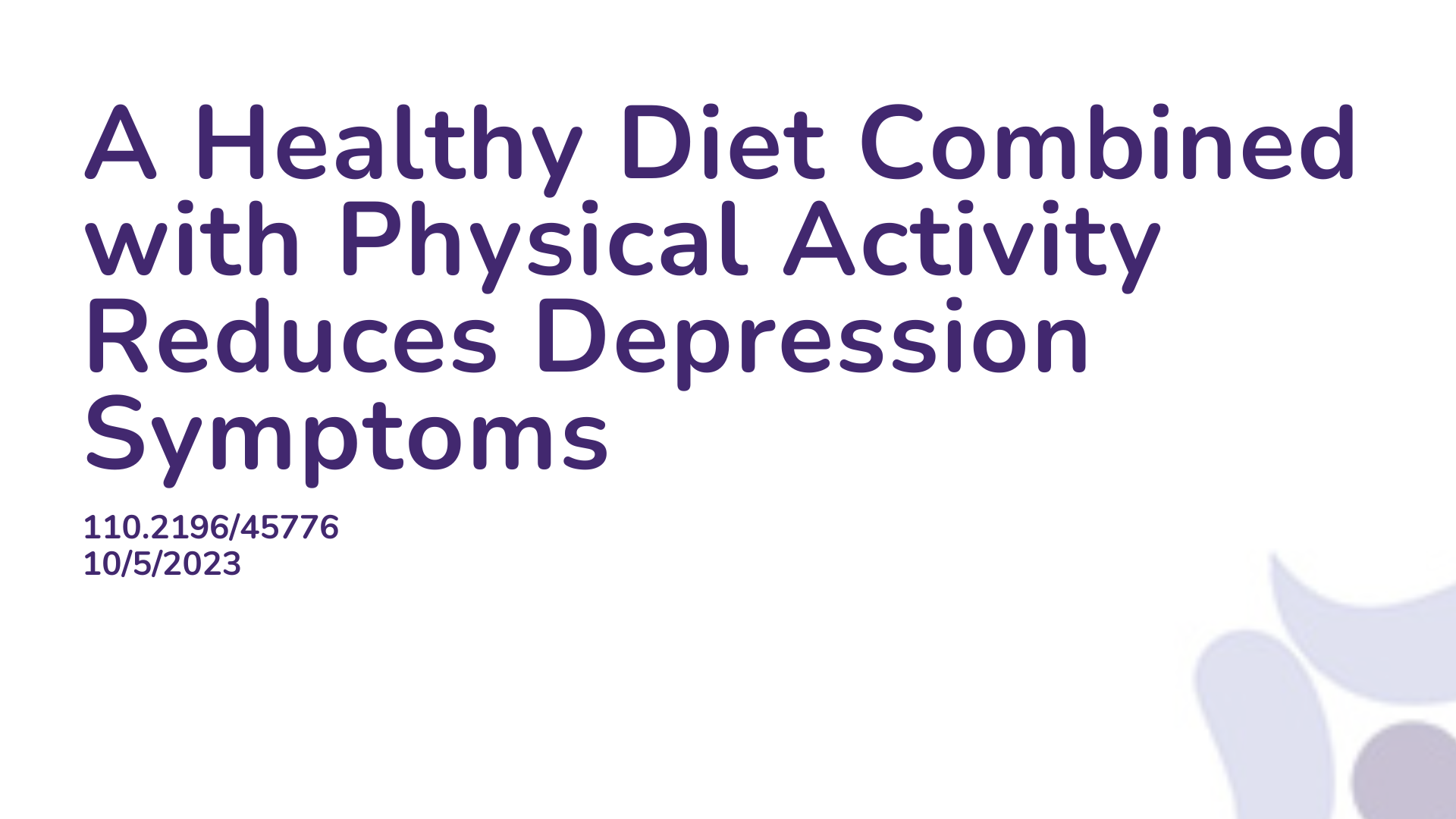Summary:
Depression is a global public health concern characterized by low mood and decreased energy. Depression affects almost 10% of the US population and severely impacts individuals, as well as the public health care system. Poor dietary and lifestyle behaviors are among the modifiable risk factors most commonly linked with depression. Individually, a poor diet and physical inactivity has been well researched, however the joint effect of these modifiable factors is not well understood. The objective of this study was to investigate the combined effect of a poor diet and physical inactivity on US adults. The authors used 4 lifestyle categories: a healthy diet and physically active, unhealthy diet but physically active, healthy diet but physically inactive, and unhealthy diet and physically inactive. The results showed that a healthy diet combined with physical activity was associated with a significantly lower risk of depression compared with those who consumed an unhealthy diet but were physically active. A healthy diet combined with physical activity was also more beneficial compared to a healthy diet combined with physical inactivity. The authors therefore concluded that individuals with a healthy diet and who are physically active have the lowest risk of depression when compared with lifestyles that only include one of the two modifiable risk factors.
Abstract:
Background: Depression escalating public health concern and the modest efficacy of currently available treatments have prompted efforts to identify modifiable risk factors associated with depression symptoms. Physical inactivity, poor nutrition, or other lifestyle behaviors are among the potentially modifiable risk factors most consistently linked with depression. Past evidence regarding the single effect of physical activity (PA) or dietary quality (DQ) on reducing the risk of depression symptoms has been well-documented. However, the association of the joint effect of PA and DQ on depression symptoms has never been investigated in a representative sample of adults. Objective: This study investigates the association between PA and depression symptoms and between DQ and depression symptoms, and their combined effects on US adults. Methods: Data were obtained from the National Health and Nutrition Examination Survey (NHANES) 2007 to 2018 cycles. The primary exposures were DQ and PA, measured using the Healthy Eating Index (HEI)-2015 and the metabolic equivalent (MET) minutes per week reported in questionnaires, respectively. Depression symptoms were defined as a 9-item Patient Health Questionnaire (PHQ-9) score of ≥10. We created 4 lifestyle categories: healthy diet and active individuals, unhealthy diet but active individuals, healthy diet but inactive individuals, and unhealthy diet and inactive individuals. Participants were considered to have a healthy diet if they fell within the 60th percentile of the HEI-2015 or to be active if they met the current guidelines for PA. A survey-multivariable logistic regression approach was used to model adjust the variables relevant to the associations, and an age-adjusted prevalence for depression symptoms was calculated following the NHANES guidelines. Results:: In total, 19,295 participants represented a weighted number of 932.5 million adults aged 20 to 80 years in the noninstitutionalized US population. The total age-adjusted prevalence of depression symptoms among all respondents was 7.08% (1507/19,295). Of the respondents, 81.97% (15,816/19,295) met the PA recommendation and 26.79% (5170/19,295) scored at or above the 60th percentile on the HEI-2015. Depression symptoms were inversely associated with a higher level of PA (adjusted odds ratio [AOR] 0.819, 95% CI 0.716-0.938) and healthy DQ (AOR 0.809, 95% CI 0.701-0.931), respectively. A healthy diet combined with recommended PA was associated with a significantly lower risk of depression symptoms (AOR 0.658, 95% CI 0.538-0.803) than those who consumed an unhealthy diet but were physically active (AOR 0.890, 95% CI 0.765-1.038) or consumed a healthy diet but were physically inactive (AOR 1.077, 95% CI 0.817-1.406). Conclusions: Our findings indicate that people with a healthy diet and recommended PA have a lower risk of depression symptoms than those with an unhealthy diet and a low level of PA. A healthy dietary habit and regular PA are potential precautions against depression.
Article Publication Date: 10/5/2023
DOI: 10.2196/45776



